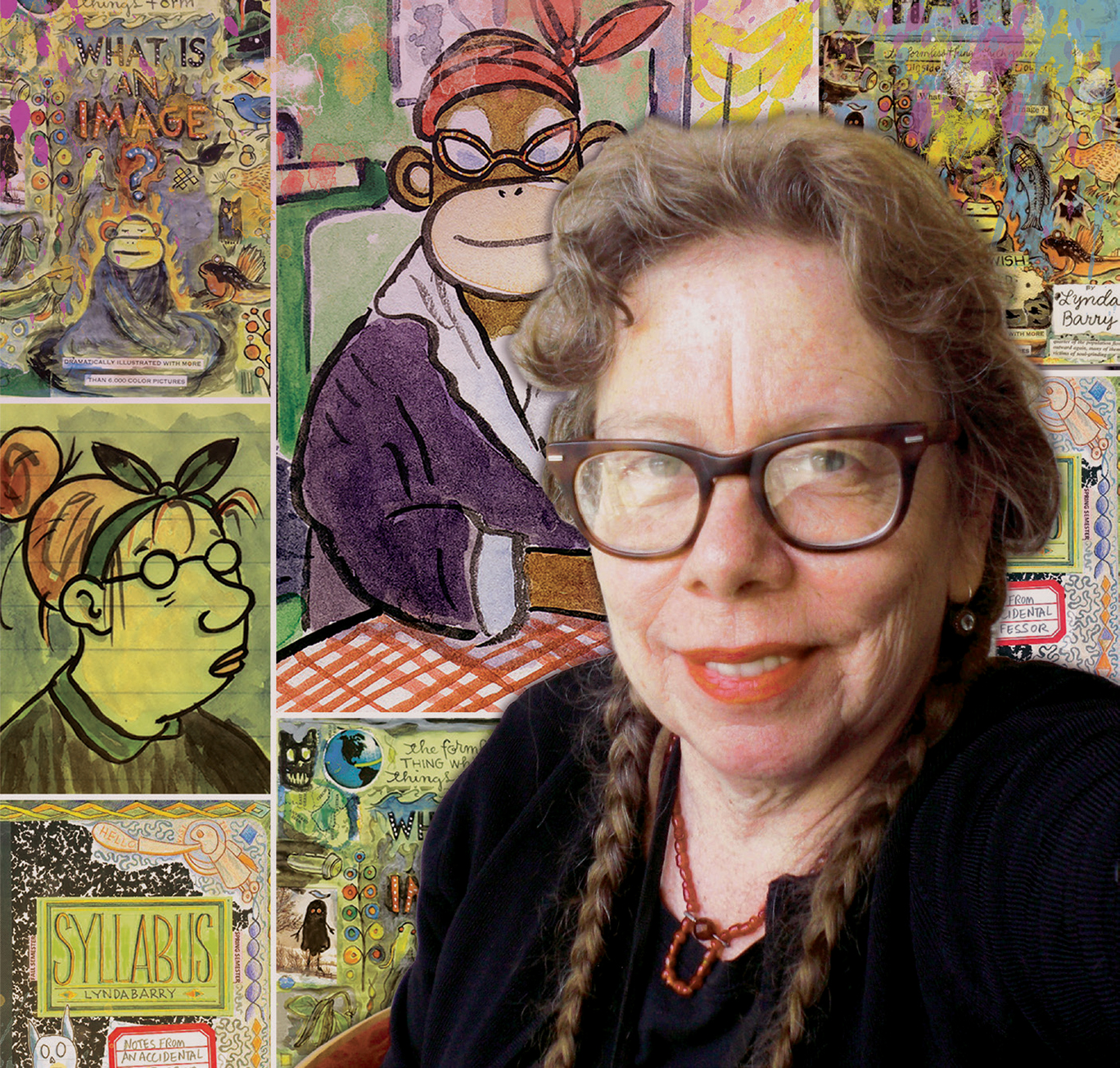Creativity Unbounded
December 15, 2016

“The original digital device is this,” cartoonist Lynda Barry said, holding up a hand and waggling her fingers. “Plus! It’s wireless and biofueled.”
As part of the Virginia Tech Department of English Visiting Writer Series, Barry gave a presentation at the Moss Arts Center on, as she described it, “our innate creative ability to work with images and what the biological function of this thing we call ‘the arts’ may be.” She also gave a craft talk on her approach to writing and cartooning.
Barry has worked as a painter, cartoonist, writer, illustrator, playwright, editor, commentator, and teacher—professions she has found to be very much alike. Widely credited with expanding the literary, thematic, and emotional range of American comics, her seminal comic strip, “Ernie Pook’s Comeek,” ran in alternative newspapers across North America for 30 years.
The central question driving her art across the decades has been, “What is an image?” An image, she said, is common to everything we call the arts—or anything a child might call a toy. “A kid in deep play is in the same state as an adult in creative concentration,” Barry said. “There’s a tacit understanding across cultures that there’s a connection between play and mental health. Yet most of us give up on the arts in stages. We think if we can’t do something well, we have no right to it. It would be as if we couldn’t ride a bike unless we rode it like Lance Armstrong.”
Now an assistant professor of interdisciplinary creativity at the University of Wisconsin–Madison, Barry noticed that graduate students writing their dissertations tend to be miserable—the result, she suspects, of such a narrow and prescribed focus.
So Barry pairs graduate students with four-year-old “co-researchers” in a program she calls Drawbridge. The students spend an afternoon a week collaborating with their preschool partners, essentially borrowing the children’s state of mind to open themselves up to discovery.
“At the center of everything we call the arts and children call play is something that seems somehow alive,” Barry said. “When we say, ‘It looks like a kid drew it,’ what if that’s what it looks like when someone has an idea? What if that’s what a live wire looks like?”
Written by Paula Byron


